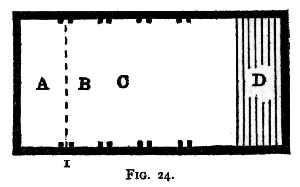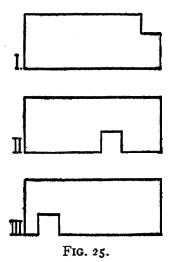Classics in
the History of Psychology
An internet resource developed
by
Christopher
D. Green
York University, Toronto, Ontario
(Return to Classics
index)
Animal Intelligence
Edward L. Thorndike (1911)
CHAPTER IV
A NOTE ON THE PSYCHOLOGY OF FISHES [1]
Numerous facts witness in a vague way to the ability of fishes to profit
by experience and fit their behavior to situations unprovided for by their
innate nervous equipment. All the phenomena shown by fishes as a result
of taming are, of course, of this sort. But such facts have not been exact
enough to make clear the mental or nervous processes involved in such behavior,
or simple enough to be available as demonstrations of such processes. It
seemed desirable to obtain evidence which should demonstrate both the fact
and the process of learning or intelligent activity in the case of fishes
and demonstrate them so readily that any student could possess the evidence
first hand.
Through the kindness of the officials of the United States Fish Commission
at Woods Holl, especially of the director, Dr. Bumpus, I was able to test
the efficiency of some simple experiments directed toward this end. The
common Fundulus was chosen as a convenient subject, and also because of
the neurological interest attaching to the formation of intelligent habits
by a vertebrate whose forebrain lacks a cortex.
The fishes studied were kept in an aquarium (about 4 feet long by 2
feet wide, with a water depth of about 9 inches) represented by Fig. 24.
The space at one end, as repre- [p. 170] sented by the lines in the figure,
was shaded from the sun by a cover, and all food was dropped in at this
end. Along each
 side of the
aquarium were fastened simple pairs of cleats, allowing the experimenter
to put across it partitions of wood, glass or wire screening. One of these
in position is shown in the figure by the dotted line. These partitions
were made each with an opening, as shown in Fig. 25. If now we cause the
fish to leave his shady corner and swim up to the sunny end by putting
a slide (without any
side of the
aquarium were fastened simple pairs of cleats, allowing the experimenter
to put across it partitions of wood, glass or wire screening. One of these
in position is shown in the figure by the dotted line. These partitions
were made each with an opening, as shown in Fig. 25. If now we cause the
fish to leave his shady corner and swim up to the sunny end by putting
a slide (without any  opening)
in behind him at D and moving it gently from D to A
and then place, say slide I, across the aquarium at I, we
shall have a chance to observe the animal's behavior to good purpose.
opening)
in behind him at D and moving it gently from D to A
and then place, say slide I, across the aquarium at I, we
shall have a chance to observe the animal's behavior to good purpose.
This fish dislikes the sunlight and tries to get back to D. He
reacts to the situation in which he finds himself by swimming against the
screen, bumping against it here and there along the bottom. He may stop
and remain still for awhile. He will occasionally rise up toward the top
of the water, especially while swimming up and down the length of the screen.
When he happens to rise up to the top at the right-hand end, he has a clear
path in front of him and swims to D and feels more comfortable.
If, after he has enjoyed the shade fifteen minutes or more, you again
confine him in A, and keep on doing so six or eight times a day
for a day or so, you will find that he swims against the screen less and
less, swims up and down along it fewer and fewer times, stays still less
and less, until finally his only act is to go to the right-hand side, rise
up, and swim out. In correspondence with this change in behavior you will
find a very marked decrease in the time he takes to escape. The fish has
clearly profited by his experience and modified his conduct to suit a situation
for which his innate nervous equipment did not definitely provide. He has,
in common language,
learned to get out.
This particular experiment was repeated with a number of individuals.
Another experiment was made, using three slides, II, III, and another,
requiring the fish to find his way from A to B, B to
C,
and from C to D. The results of these and still others show
exactly the same general mental process as does the one described -- a
process which I have discussed at length elsewhere.
Whatever interest there is in the demonstration in the case of the bony
fishes of the same process which accounts for so much of the behavior of
the higher vertebrates may be left to the neurologists. The value of the
experiment, if any, to most students will perhaps be the extreme simplicity
of the method, the ease of administering it, and its possibilities. By
using long aquaria, one can study the formation of very complex series
of acts and see to what extent any fish can carry the formation of such
series. By proper arrangements the delicacy of discrimination of the fish
in any respect may be tested. The artificiality of the surroundings may,
of course, be avoided when desirable.
[1] This chapter appeared originally in the American
Naturalist, Vol. XXXIII, No. 396.
 side of the
aquarium were fastened simple pairs of cleats, allowing the experimenter
to put across it partitions of wood, glass or wire screening. One of these
in position is shown in the figure by the dotted line. These partitions
were made each with an opening, as shown in Fig. 25. If now we cause the
fish to leave his shady corner and swim up to the sunny end by putting
a slide (without any
side of the
aquarium were fastened simple pairs of cleats, allowing the experimenter
to put across it partitions of wood, glass or wire screening. One of these
in position is shown in the figure by the dotted line. These partitions
were made each with an opening, as shown in Fig. 25. If now we cause the
fish to leave his shady corner and swim up to the sunny end by putting
a slide (without any  opening)
in behind him at D and moving it gently from D to A
and then place, say slide I, across the aquarium at I, we
shall have a chance to observe the animal's behavior to good purpose.
opening)
in behind him at D and moving it gently from D to A
and then place, say slide I, across the aquarium at I, we
shall have a chance to observe the animal's behavior to good purpose.